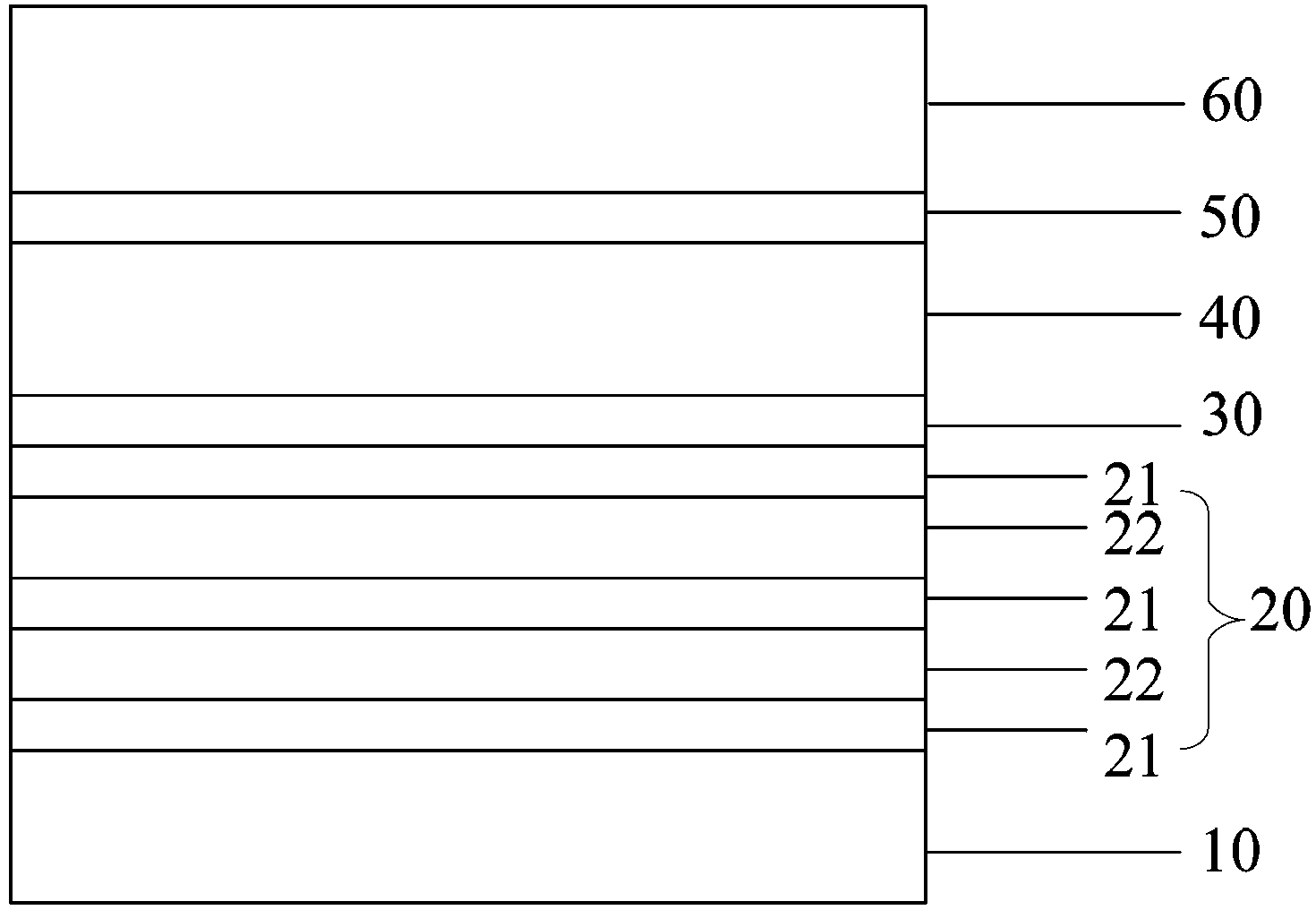Organic light-emitting device and preparation method thereof
An electroluminescence device and luminescence technology, which are applied in the fields of electric solid-state devices, chemical instruments and methods, semiconductor/solid-state device manufacturing, etc., can solve problems such as the reduction of the recombination probability of holes and electrons, the change of color coordinates, and poor color rendering
- Summary
- Abstract
- Description
- Claims
- Application Information
AI Technical Summary
Problems solved by technology
Method used
Image
Examples
Embodiment 1
[0069] A method for preparing an organic electroluminescent device, comprising the following steps:
[0070] (1) Photolithographically process the ITO, cut it into the required size, and use detergent, deionized water, acetone, ethanol, and isopropanol to sonicate for 15 minutes each to remove organic pollutants on the glass surface. The anode substrate is subjected to oxygen plasma treatment, the treatment time is 5min, and the power is 30W;
[0071] (2) Evaporating the quantum well layer on the anode substrate treated in (1), evaporating the first organic material layer on the anode substrate, and evaporating the first p-doped layer on the first organic material layer. The first p-doped layer is vapor-deposited on the first organic material layer, the second p-doped layer is vapor-deposited on the second organic material layer, the third organic material layer is vapor-deposited on the second p-doped layer, and the quantum well layer includes The first, second and third org...
Embodiment 2
[0079] A method for preparing an organic electroluminescent device, comprising the following steps:
[0080] (1) Perform photolithography treatment on IZO, cut it into the required size, and use detergent, deionized water, acetone, ethanol, and isopropanol to sonicate for 15 minutes each to remove organic pollutants on the glass surface. The anode conductive substrate is subjected to oxygen plasma treatment, the treatment time is 5min, and the power is 30W;
[0081] (2) Evaporating the quantum well layer on the anode conductive substrate treated in (1), evaporating the first organic material layer on the anode conductive substrate, and evaporating a p-doped layer on the first organic material layer, Then evaporate a second organic material layer on the p-doped layer, and the quantum well layer includes the first and second organic material layers and the p-doped layer.
[0082] Wherein, in this embodiment, the material of the p-doped layer is TAPC doped WO 3 Formed hybrid ma...
Embodiment 3
[0087] A method for preparing an organic electroluminescent device, comprising the following steps:
[0088] (1) Photolithographically process the ITO, cut it into the required size, and use detergent, deionized water, acetone, ethanol, and isopropanol to sonicate for 15 minutes each to remove organic pollutants on the glass surface. The anode substrate is subjected to oxygen plasma treatment, the treatment time is 5min, and the power is 30W;
[0089] (2) Evaporating the quantum well layer on the anode substrate treated in (2), evaporating the first organic material layer on the anode conductive substrate, and evaporating the first p-doped layer on the first organic material layer. The second organic material layer is evaporated on the first p-doped layer, the second p-doped layer is evaporated on the second organic material layer, the third organic material layer is evaporated on the second p-doped layer, and the third organic material layer is evaporated on the third p-doped...
PUM
| Property | Measurement | Unit |
|---|---|---|
| Thickness | aaaaa | aaaaa |
| Thickness | aaaaa | aaaaa |
| Thickness | aaaaa | aaaaa |
Abstract
Description
Claims
Application Information
 Login to View More
Login to View More - R&D
- Intellectual Property
- Life Sciences
- Materials
- Tech Scout
- Unparalleled Data Quality
- Higher Quality Content
- 60% Fewer Hallucinations
Browse by: Latest US Patents, China's latest patents, Technical Efficacy Thesaurus, Application Domain, Technology Topic, Popular Technical Reports.
© 2025 PatSnap. All rights reserved.Legal|Privacy policy|Modern Slavery Act Transparency Statement|Sitemap|About US| Contact US: help@patsnap.com


